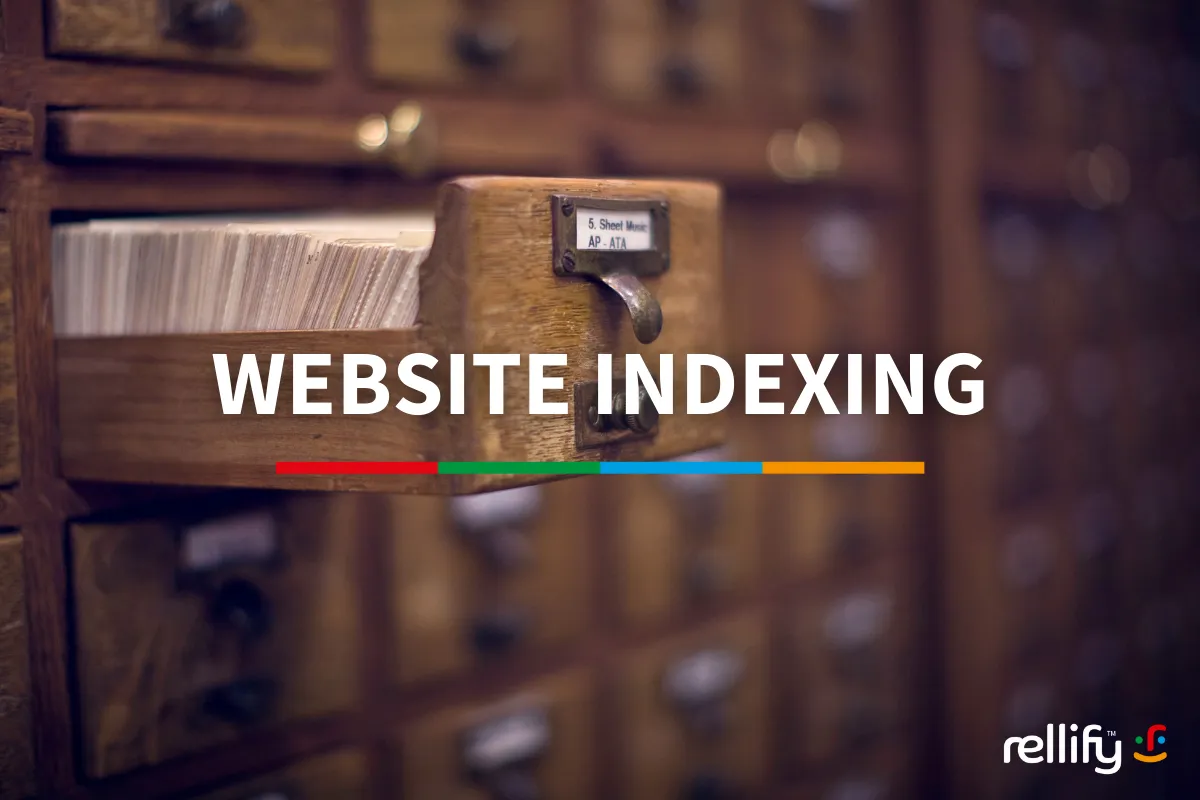Google Indexing: The First Step in Search Results
Last Updated on
May 21, 2024
Published:
December 22, 2023

Website indexing is the cornerstone of search engine optimization. Imagine it as your site being cataloged in a vast global library, where search engines like Google acknowledge its existence and present it in their listings. A Google presence is not optional—it's a must-have for the digital footprint of any thriving business.
High visibility on Google can open the floodgates to web traffic and potential new customers. But before you can climb those search engine ranks, you need to make sure Google knows your website exists. That's where Google indexing comes into play.
Set the Stage for Search Engines: Indexing Your Website
First of all, what exactly is "indexing?" Well, it's the way that search engines, Google particularly, probe and rank pages all throughout the web. When your website sends out a signal that it wants to be included among Google's ranks, Google sends "crawlers" (information-gatherers) to your site to check it out. It looks for certain elements of optimization on your site and signs that your pages are user-friendly, high-quality, and expert.
Imagine Google's index as a living, breathing organism—constantly evolving, never static. Its army of crawlers never stop scanning for new virtual territories to chart. To entice these digital explorers to your domain, you should:
- Use Google Search Console to submit your sitemap — a map that guides crawlers through your site's structure.
- Use www.google.com/addurl to explicitly request Google to crawl and index your site or to keep certain pages out of the index.
To confirm your site's URL submission and induction into the ranks of the indexed, a quick "site:yourwebsite.com/URL" search in Google should display your pages. Alternatively, use Google Search Console's URL Inspection tool for a behind-the-scenes look.
Sometimes, you may want to keep certain areas of your site out of the public eye—like private admin pages—while ensuring your content-rich blog or store pages are fully indexed. This is where the "noindex" tag and strategic use of the robots.txt file come into play, directing crawlers on where (not) to tread.
When Google Ignores Your Site: Troubleshooting Google Indexing Issues
It's important to verify the sitemap for errors and check your robots.txt file—it might be unwittingly turning away crawler guests. The .htaccess file could also be the invisible barrier keeping crawlers at bay.
If not manually prompted, the indexing process through crawlers can take time, potentially up to three months or more. If you've rolled out the red carpet for crawlers and your site still isn't indexed, check for common issues. First, make sure the sitemap is error-free, because an incorrect sitemap will hinder indexing. Google Search Console can help in reviewing the sitemap. The robots.txt file may also contain directives that block crawler access, as mentioned earlier.
This simple text file, located in your website’s directory, can prevent crawler access if it includes the following:
- User-agent: *
- Disallow: /
For blocking specific pages, the commands would look something like this:
- User-agent: *
- Disallow: /folder1
- Disallow: /subfolder2/subfolder3
Reaping the Rewards of Google Indexing
Once your website is indexed, you're in the running to achieve that coveted spot in Google's search results. A high Google rank is like striking digital gold, leading to more visitors and greater visibility. A robust sitemap doesn't just boost your SEO. It also enhances the user journey, and a positive user experience is a cornerstone of a website's success.
Indexing is not just a technical SEO checkbox—it's your ticket to the vast world of Google search, where the visibility of your content, website traffic, and the satisfaction of your users can soar to new heights.

Get help from the "indexing experts"
Here at Rellify, we're not only passionate about getting our clients' content published and indexed, but also ensuring they're reaching their target audience in web searches.
Rellify's comprehensive content-development services include a review of index status, so that you know whether your content is being picked up by search engines. You can also monitor other indications of indexing, including impressions and Google rankings. Insights from our one-click analysis are derived from Google Core Web Vitals. While you can find these yourself through Google Search Console, what makes Rellify different is that we contextualize these insights. We use them to inform topic ideation and strategy tailored to your specific enterprise. You receive the information and direction you need to make informed, data-driven decisions about how and where to shape a most relevant and effective content strategy.
Ready to find out more? We'd love to schedule a quick meeting to demonstrate exactly what makes Rellify different and how your company can benefit from our unique insights and services.



